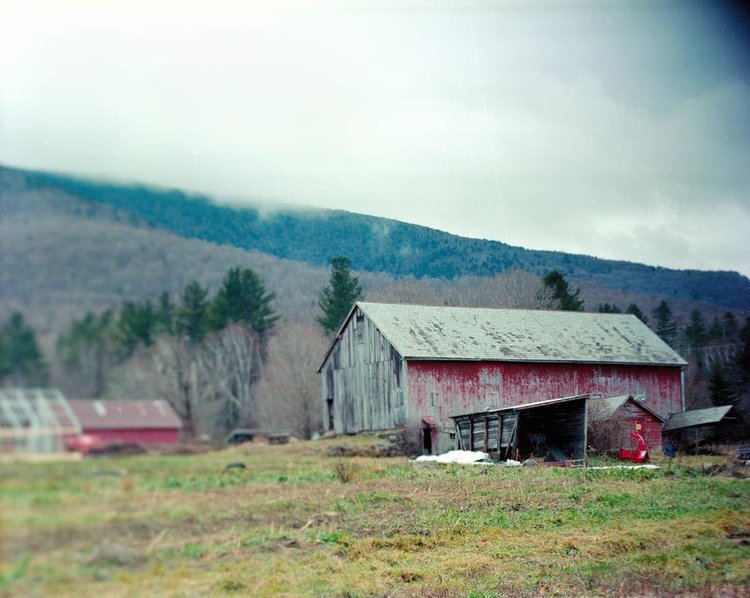Culturally Relevant Pedagogy & Primary Sources from the VFC Archives
Yoder Farm In Danby, VT (2018), part of Growing Food, Growing Farmers exhibit.
The Free to Use and Reuse collection contains a treasure trove of posters and photographs, many from the Work Projects Administration (1936-1943).
Milk truckers Poster (1940), part of the Free to Use and Reuse Collection (Library of Congress)
As we enter the 2022-2023 school year, we wanted to take this moment to reflect on two recent activities that have shaped the development of our classroom resources. As a part of a consortium of partners from folklife and oral history organizations across the country, the Vermont Folklife Center (VFC) received support from the Library of Congress to participate in their Teaching with Primary Sources (TPS) program. This past July, the VFC organized a workshop at the St. Albans Museum for K-12 educators that presented oral history interviews focused on the roles farmers play in Vermont’s history and identity. A few weeks later, the VFC participated in a workshop at the Minnesota History Center that offered strategies for pairing the use of primary sources with approaches to culturally relevant pedagogy. These events were an opportunity to test out ideas with educators and curriculum developers and to gain feedback on how best to present these materials as a lasting resource for K-12 classrooms.
The VFC has the unique distinction of housing an audio archive of over 6,000 recordings. It is also an archive primarily dedicated to oral history and ethnographic research. This means that the topics and themes represented in the collections are a reflection of a comprehensive view of Vermont life and offer a rich body of primary sources. These attributes are a considerable asset for the Teaching with Primary Sources program – interviews and sound materials are typically underrepresented.
The Sanborn Map collection, generated from fire insurance surveys starting from the 1860s, are an excellent source of information about commercial, residential and industrial activities across the United States.
Map of St. Albans (1884), part of the Sanborn Fire Insurance Survey (Library of Congress).
Our first task was to conduct a survey of digitized recordings and create primary source sets that we could present for classroom learning. Thanks to April McIlwaine, a graduate student of the UVM Foodways Program and VFC Education intern for Spring 2022, we were able to conduct detailed reviews and keyword indexing of nearly 30 interviews on topics related to everything from multigenerational farms, gendered experiences in agriculture, technological changes in the 20th century, rural foodways, and migrant work and life in Vermont, to name a few. These interviews were curated into a listening party and, with the help of Shelburne Farms Farm-based Educators Network, a dozen individuals from dairy farm backgrounds were invited to offer reflections on the significance of these interviews. This audience was instrumental for refining our project objectives and adjusting how we present the interview excerpts for students and for the general public who may not be as familiar with this way of life. The cohort of educators who participated in the St. Albans workshop shared how they used primary sources with their students and offered valuable feedback on how to further develop the materials from the VFC archives into primary sources. Their key takeaways:
Find culturally relevant ways to center agricultural history to the students’ lives
Develop contextual information for interviews that discuss detailed agricultural processes or historical technology
Offer inquiry approaches tailored to the specific qualities of sound recordings
We rounded out the summer season with an experience to learn more about culturally relevant pedagogy in practice. Culturally relevant pedagogy is a framework for supporting and honoring the cultural identities of students and developing their competency in at least one other culture (see videos published by the Minnesota Historical Society that present the possibilities and successes of this approach). This convening provided an opportunity to hear from teachers across the country about their experiences engaging with primary sources through this pedagogical lens. The discussions gravitated toward the current challenges in schools around teaching topics with a critical lens, particularly social studies. Primary sources, when grounded in local histories, lives and places, can disrupt dominant narratives and effectively center authority in community testimonies and records. The workshop speakers offered case studies that demonstrated how such approaches motivate and inspire students because they are able to draw direct links to their life experiences.
Going forward, the VFC will publish the full interviews, audio excerpts and transcripts online as part of Local Learning’s educational resources, the lead partner on this Teaching with Primary Sources project. We will continue to organize outreach events to educators in order to increase the visibility of these oral history collections and amplify Vermont stories in the classroom.
Do you use Primary sources in your classroom? How would you like to see Vermont materials presented with your students? Let us know! Get in touch: education@vermontfolklifecenter.org



